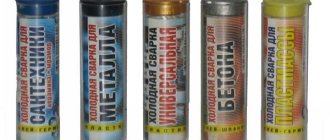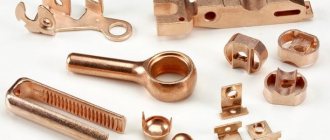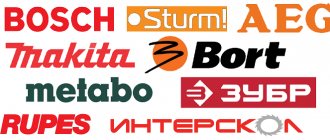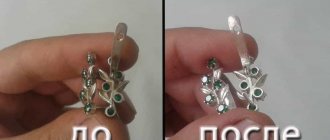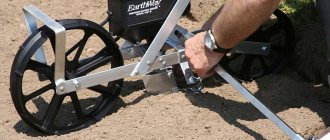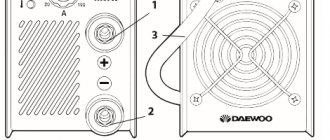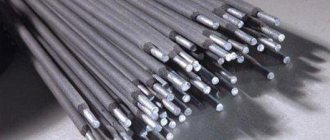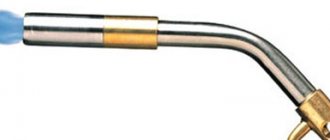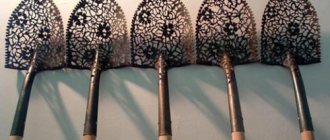Copper products are actively used not only in various industries, but also in everyday life. In this regard, it is quite natural that many craftsmen have a question about how to melt copper and make various products from it at home using the casting method. Knowledge of this technology, which has been known to mankind since ancient times, allows us to create various objects not only from copper, but also from its alloys - brass and bronze.
Melting copper in a homemade stove
Is it possible to melt copper at home - Metals, equipment, instructions
Jewelry and other items made of copper or with copper elements have become widespread throughout the world.
Finding it at home, in scrap metal, will not be difficult. There are many applications for this metal. Often, in order to achieve the goal, it is necessary to melt copper, and do it at home.
The procedure is quite simple if you know its characteristics and melting point.
Characteristics
Copper is one of the first metals that people began to obtain and use for further processing. Products made from an alloy or pure copper were used even before our era. This demand arose as a result of ease of processing using conventional methods, as well as ease of melting and casting.
| Want to repair unusable forging dies? Try our patented wear-resistant surfacing technique! In a short time, thoroughly, on a budget. Calculate the cost - https://shop.deloproltd.ru/kommercheskoe-predlozhenie/. |
The material has a characteristic red-yellow tint, and due to its softness, it can be easily deformed, melted, processed and made into various objects. When the surface comes into contact with oxygen, it begins to form an oxide film, which gives a beautiful shade.
A very significant characteristic is the electrical and thermal conductivity of the material, which ranks second among all types of metals, with silver in first place. These characteristics made it possible to use it in the electrical field, as well as for rapid heat removal.
Melting temperature
Melting is the process by which a metal changes from a solid to a liquid state. Each material has its own melting point, at which a liquid state can be obtained. The presence of impurities plays a major role in smelting.
The metal itself begins to melt at 1083 degrees. If the composition contains tin, then the temperature is reduced and will range from 930 to 1140 degrees. Such a temperature difference is precisely due to the presence of tin in the composition. If zinc is included, then the alloy can be melted in the temperature range of 900-1050 degrees.
This metal can boil at a relatively low temperature for metals. It is 2560 degrees, during boiling the process will be similar to other liquids in this state. The casting begins to bubble and gas is released.
To know how to melt the material at home, you need to study the step-by-step instructions and various procedure options described below.
Step-by-step instructions for melting
To melt copper at home, you need to make the temperature a little higher than the one at which it will melt. In this case, it will not be possible to use a jar and a fire or similar methods. There will be no result.
It is recommended to use a blast furnace, and it is important that the heat be regulated. You can make a smelting furnace with your own hands from ordinary materials. The exact diagram and principle of operation can be used on various forums, watch the video with step-by-step instructions.
Old fire extinguishers are often used to create a stove. If you choose this method, you need to cut off the top part and make a lid that will close. Additionally, the interior space is treated with clay and a heating element is installed.
Smelting should be carried out in a container that itself will not melt or deform due to high temperatures, and accordingly, can withstand more than 1100 degrees. Additionally, remelting copper products requires the creation of a nitrogen environment; if it is not there, the material will deteriorate.
When everything is ready, you can melt the material and get a single ingot from it, which can be used in the future for your needs.
Melting in a muffle furnace
You can melt copper at home using the following equipment:
- The crucible into which the metal will be placed for melting.
- Tongs that can remove the crucible from the furnace.
- Muffle furnace or forge for heating.
- Mold for pouring liquid copper.
- Steel hook.
The step-by-step casting algorithm is as follows:
- The metal for smelting must be crushed and placed in a crucible. The finer the state, the faster the material will melt. The finished crucible is placed in a furnace heated to the required temperature.
- When the copper becomes liquid and completely melts, you need to remove the crucible with tongs, and you need to act carefully but quickly. There will be chaff on the surface of the liquid mass; use a hook to move it and pour the material into the prepared container.
- It is not recommended to use pure metal to create complex shapes or small objects, this is caused by the poor fluidity of copper without impurities. In this case, it is better to use alloys that contain zinc, tin and other metals.
Homemade devices
To smelt copper it is not necessary to use special devices; you can use homemade structures. The main condition is to comply with safety precautions and basic rules for working with the material.
If there is no muffle furnace or forge, then a simple gas burner is used. True, the copper itself will come into contact with oxygen, due to which rapid oxidation occurs. To prevent the appearance of a thick layer on the surface, you must use crushed coal when the metal takes a liquid form.
To obtain a liquid consistency of the material you need:
- Install a support on the ground; for this, sand-lime bricks are used; a metal mesh with small cells is placed on them.
- Coal is poured onto the grid and heated using a gas lamp. To obtain a high temperature, you can use a vacuum cleaner that is aimed at the coal and produces a strong air flow.
- A crucible is placed on the hot material, you need to wait until everything melts. Then pour the resulting liquid into the mold.
You can also use a propane-oxygen flame at home. It is recommended to use it for alloys containing tin or zinc.
If you have a powerful microwave oven at home, then you can carry out the melting procedure in it. For safety, as well as to preserve heat and protect the furnace itself, it is necessary to wrap the crucible in a heat-resistant material, and also use a cover for it. After placing it, you need to set the maximum mode and wait for the metal to melt.
Due to its low melting point, copper can be easily used to make various parts and objects right at home.
Using the described methods, you can achieve high-quality results with minimal investment.
As soon as the temperature drops, the material will begin to take on a solid state and then cool completely. To create small or complex parts, alloys must be used.
During the work, it is recommended not to bring the material to a boil, since it loses its properties, becomes less hard after cooling, and deteriorates visually. As a result of boiling, gas is released, and after cooling the products will have a porous surface.
How to get copper at home
One of the most expensive and common metals in consumer electronics is copper. It is this metal that attracts the attention of scrap collectors more than others, due to its high cost and widespread use due to its properties.
For example, an old tube TV may contain copper parts weighing up to 1.5 kg. Things are worse with new models of semiconductor TVs, however, they can also collect up to 0.5 kg of copper.
Compression refrigerators and electric motors, the copper content of which reaches 1 kg, are also distinguished by a good content of copper windings and spare parts.
You can get copper for scrap metal and in such devices as: transformers, starters, relays, magnetic starters, fluorescent lamp fittings. The yield of pure metal in these parts is not very high, but due to their wide distribution and widespread use, they are quite attractive sources of non-ferrous scrap.
To optimize the collection of scrap metal, it is necessary to develop an algorithm for the collection of copper-containing devices, their delivery to the dismantling site, the disassembly itself and, of course, delivery to the collection point.
The main sources of copper scrap include landfills, construction sites and abandoned transformer boxes. A garage can serve as a place for disassembly and storage.
You can, of course, carry out the analysis directly on the spot, but for this you will have to constantly have all the necessary tools with you, so this option is only suitable if you have a car.
Getting copper to sell for scrap is only half the battle. The most important thing is to sell the mined metal profitably. During the year, prices for scrap non-ferrous metals can fluctuate greatly, and since summer is the main season for copper mining, it is highly undesirable to hand over it during this period. It is better to store the mined copper until winter and wait for an increase in the price of reception, this way you can sell the copper for scrap metal more profitably.
Copper plating at home
Copper plating is the process of applying copper by electroplating. With the help of copper plating, you can restore surface defects and make the item intrinsically safe. Since copper is a soft metal, it easily deforms upon impact without producing a spark.
Copper plating can be used as a preparatory process before other galvanic processes such as nickel and chrome plating. During the copper plating process, copper “sticks” very well to steel parts, protecting them from corrosion.
Thus, it creates a protective layer that prevents the metal from oxidizing during galvanic plating and operation under “difficult” conditions. A copper-plated key will not become rusty when working with sea water if the copper layer covers the entire area of the key.
Copper plating is often used at home to restore any parts that have lost their acceptable appearance or worn out over time.
https://www..com/watch?v=5l0ZlXDYHOI
At large enterprises, you can find huge industrial galvanic baths. They are typically automated and use highly concentrated acids that require a special license to dispose of.
Melting copper at home: origin, physical properties and melting point
People have learned to mine and smelt copper since ancient times. Already at that time, the element was widely used in everyday life and various objects were made from it.
They learned to make an alloy of copper and tin (bronze) about three thousand years ago; it made good weapons. Bronze immediately became popular because it was durable and beautiful in appearance.
Jewelry, dishes, labor and hunting tools were made from it.
Thanks to the low melting point, it was not difficult for humanity to quickly master the production of copper at home. How does the melting process of copper occur, at what temperature does it begin to melt?
Origin and occurrence of copper in nature
The chemical element got its name from the name of the island of Cyprus (Cuprum), where they learned to extract it back in the 3rd millennium BC. In the periodic table of chemical elements, copper has atomic number 29 and is located in group 11 of the 4th period. The element is a ductile transition metal with a golden-pink color.
In terms of distribution in the earth's crust, the element ranks 23rd among other elements and is most often found in the form of sulfide ores. The most common types are copper pyrite and copper luster. Today there are several ways to obtain copper from ore , but any of the technologies requires a step-by-step approach to achieve the final result.
At the very beginning of the development of civilization, people learned to obtain and use copper, as well as its alloys. Already at that distant time they were mining not sulfide, but malachite ore.
In this form, it did not require pre-firing.
A mixture of ore and coals was placed in a clay vessel, which was lowered into a small pit, after which the mixture was set on fire, carbon monoxide helped restore malachite to the state of free copper.
In nature, copper is found not only in ore, but also in native form; the richest deposits are located in Chile. Copper sulfides often form in mid-temperature geothermal veins. Often copper deposits can be in the form of sedimentary rocks - shales and copper sandstones, which are found in the Chita region and Kazakhstan.
Physical properties
Ductile metal in the open air is quickly covered with an oxide film , which gives the element a characteristic yellowish-red tint; in the lumen, the films can have a greenish-blue color. Copper is one of the few elements that have a color that is noticeable to the eye. It has a high level of thermal and electrical conductivity - this is second only to silver.
- Density - 8.94*103 kg/m3
- Specific heat capacity at T=20°C - 390 J/kg*K
- Electrical resistivity in temperature conditions from 20-100°C - 1.78 * 10-8 Ohm/m
- Boiling point - 2595oC
- Specific electrical conductivity at T=20°C is 55.5-58 MS/m.
Melting point of copper
The melting process occurs when a metal changes from a solid to a liquid and each element has its own melting point. Much depends on the presence of impurities in the metal; copper usually melts at a temperature of 1083 ° C.
When tin is added to it, the melting point decreases and is 930-1140°C; the melting point here will depend on the tin content in the alloy. In an alloy of copper and zinc, the melting point becomes even lower - 900-1050 ° C.
In the process of heating any metal, the crystal lattice is destroyed. As it heats up, the melting point becomes higher, but then it remains constant after it has reached a certain temperature limit. At such a moment, the process of melting the metal occurs, it completely melts and after that the temperature begins to rise again.
When the metal begins to cool, the temperature begins to decrease and at some point it remains at the same level until the metal completely hardens. Then the metal hardens completely and the temperature drops again. This can be seen in the phase diagram, which displays the entire temperature process from the beginning of melting to the solidification of the metal.
heated copper begins to boil at a temperature of 2560°C. The process of boiling metal is very similar to the process of boiling liquid substances, when gas begins to evolve and bubbles appear on the surface. When the metal boils at the highest possible temperatures, carbon begins to be released, which is formed as a result of oxidation.
Melting copper at home
The low melting point allowed people in ancient times to melt metal directly on a fire and then use the finished metal in everyday life to make weapons, jewelry, dishes, and tools. To melt copper at home you will need the following items:
- Crucible and special tongs for it.
- Charcoal.
- Muffle furnace.
- Horn.
- Household vacuum cleaner.
- Melting mold.
- Steel hook.
The whole process occurs in stages; first, the metal must be placed in a crucible, and then placed in a muffle furnace. Set the desired temperature and watch the process through the glass window. During the melting process, an oxide film will appear ; it must be removed by opening the window and moving it to the side with a steel hook.
If there is no muffle furnace, then copper can be melted using an autogen ; melting will occur with normal air access. Using a blowtorch you can melt yellow copper (brass) and fusible types of bronze. Make sure that the flame covers the entire crucible.
If you don’t have any of the above remedies at home, then you can use a forge , setting it on a layer of charcoal. To increase the temperature, you can use a household vacuum cleaner by turning on the blowing mode, but only if the hose has a metal tip. It is good if the tip has a narrowed end so that the air stream is thinner.
In modern industrial conditions
copper in its pure form is not used ; its composition contains many different impurities - iron, nickel, arsenic and antimony, as well as other elements.
The quality of the finished product is determined by the presence of the percentage of impurities in the alloy, but not more than 1%. Important indicators are the thermal and electrical conductivity of the metal.
Copper is widely used in many industries due to its ductility, flexibility and low melting point.
- Alexander Romanovich Chernyshov
Melting point of copper: how to melt metal at home - step-by-step instructions
Copper is an extremely popular and widespread metal used in the production of electronics, power transmission, and the manufacture of various alloys.
What is the melting point of copper, how is it mined and why is it interesting ? Let's talk about all this.
How is copper obtained?
The reserves of this metal on Earth are relatively small (compared to other elements). Moreover, it is found both in the form of nuggets and as part of complex compounds .
Most often these are copper pyrite, chalcopyrite, bornite and chalcocite. They are found in sedimentary rocks, but most often in hydrothermal veins.
The total number of copper deposits in the world is quite large, but there are only a few truly large ones of strategic importance .
!
copper in the ore is very small - 0.3–1%, depending on the specific deposit.
In Russia, this is Udokan, located in the Trans-Baikal Territory. If we consider Europe, the largest deposit is the German Mansfeld. In the neighboring countries, Kazakhstan can boast of such reserves - they are in the city of Zhezkazgan.
A serious honey belt is located in Central Africa. The USA also has a large deposit - Morenci. Finally, Chile can boast of two serious production points at once - Collausi and Escondida .
Copper ore is mined using the open-pit method. Only a relatively small part of the deposits, where the raw materials lie at great depths, use the shaft method.
After mining, the ore undergoes complex processing to separate the pure metal from the slag. For this, different methods are used: electrolysis, hydrometallurgy, and pyrometallurgy.
How did our ancestors smelt copper?
This is the oldest metal that people have mastered. Amazing plasticity has become its main advantage. It is thanks to him that, even with primitive tools, it is possible to process metal, making household items and various tools from it.
!
The Latin name “cuprum” comes from the name of the island of Cyprus, where a large deposit was discovered. The exact origin of the Russian word “copper” is, alas, unknown - there are only a few theories.
Our ancestors learned to process the first metal around the 4th millennium BC . Finding cobblestones of unusual color, people tried to process them, hitting them with heavy stones as usual. However, the nuggets did not split, but were only deformed. Thus, primitive craftsmen were able to make the first tools.
This was the reason for the transition from the Stone Age to the Copper Age. Making metal weapons took no more effort than making stone ones. But it served much longer, and if damaged, a copper ax or knife could be repaired - stone analogues had to be made anew.
At what
degrees does copper melt? Today, this temperature does not seem high to experts - only 1083 degrees Celsius.
However, for ancient metallurgists it was unattainable, so they learned to melt the material for full processing much later - only in the 3rd millennium BC, when the necessary technologies appeared. However, even before this, in many settlements, craftsmen heated copper nuggets over fires, noticing that hot metal was much easier to process.
What has changed over time
Of course, modern copper products cannot be compared with those that were made five thousand years ago.
Instead of crude copper knives, axes and arrowheads and spears, today sophisticated parts for electronics are produced. But all the properties of the metal remained unchanged.
At what temperature copper melts today is the same temperature it melted at thousands of years ago. But technology has improved significantly.
For example, previously pure (relatively pure, of course) metal was extracted from ore using the most primitive methods. For example, ore and coal were placed in a clay jug.
The vessel was placed in the pit, the mixture was set on fire, and the pit was filled up. When coal burned, carbon monoxide was released.
By contacting the ore, it triggered a reaction that released metal and a small amount of water.
Today, as mentioned above, different methods are used to remove impurities from ore.
Using a special copper melting schedule and various processing methods , specialists can obtain almost completely pure metal.
Let us consider hydrometallurgical as an example as the easiest to understand. Copper ore is filled with sulfuric acid . Copper, as a relatively active metal, reacts to form copper sulfate. Iron, when in contact with it, displaces copper. The reaction produces ferrous sulfate and copper.
Physical properties
It has a rare color - golden-pink, which is very unusual for metals. It reacts relatively easily and also combines with other metals, significantly changing their properties. A demonstration of this is the combustion process - just mix pure metal with sulfur and heat the mixture.
What makes it in demand is its excellent electrical conductivity - only silver has .
In addition, it boasts good thermal conductivity, which makes it an indispensable material in the production of heat pipes and cooling radiators . The boiling point of copper is quite high - 2567 degrees Celsius.
https://www.youtube.com/watch?v=5l0ZlXDYHOI
Melting metal at home or industrially is the same. The temperature rises gradually and constantly. However, when sufficient heat is received, the crystal lattice is destroyed.
At this point, the temperature stops rising, even though the heating does not stop. The melting point of copper , as mentioned above, is 1085 degrees Celsius .
Only after the metal has completely melted will the temperature continue to rise. It boils at 2567 degrees Celsius.
When cooled, the crystal lattice is restored and the metal hardens. The crystallization temperature is 1085 degrees, and when lowered it becomes even more dense.
Alloys can have widely different melting points . For example, the melting point of aluminum and copper is 1040 degrees Celsius.
How to melt at home
Some people have hobbies related to metal casting . Those who are just embarking on this fascinating path are often interested in how to melt copper at home. For this you will need:
- melting mold;
- forceps;
- raw materials for smelting;
- a high-pressure gas burner is the best solution, since not every household has a forge;
- protective equipment (glasses, thick gloves).
If you have everything you need, you can start melting at home. The step-by-step instructions are quite simple:
- If possible, grind the metal - you can use a file to turn it into sawdust. This will allow it to melt faster.
- Place in a mold for melting - it must be made of a material with a high melting point.
- Put on protective equipment, light the burner and direct the flame to the raw material.
- Once the copper is melted, grab the melting mold with tongs and pour the liquid metal into the prepared mold.
As you can see, everything is quite simple. However, this method is not suitable for all alloys. For example, the melting point of steel is too high - a conventional burner will not work here. This also applies to the alloy of copper and iron.
The scope of application is very wide . Here are just a few examples:
- transmission of electricity - low resistance makes this metal extremely popular;
- instrument making – resistance to water, including sea water, is very important in many areas;
- when soldering – also due to good electrical conductivity;
- water pipes - it conducts heat well;
- cooling radiators – the thermal conductivity of metal allows not only to warm rooms, but also to cool equipment.
Now you know everything about copper, how to obtain it, history, use, and how to process it at home. Surely this knowledge will be useful for you .
Technology and its principles
In simple terms, forging involves changing the shape of metal. Depending on the type of material, there are different principles of a blacksmith’s work. For example, to affect iron, it must be heated to 800 degrees, and the temperature of forging aluminum is 400 degrees.
Non-ferrous metals can be forged using the cold metal forging method. Their structure is characterized by softness, so you can work with such materials without preheating them.
When working with metals, specialists use some technological techniques, without which it is impossible to make a high-quality product:
- Drawing is a method in which the workpiece is forged along all lengths (periodically turned over). These actions are necessary to increase the length of the part. Also, in artistic forging, a hood is used to flatten the edges of decorative elements.
- Upsetting is carried out when the craftsman needs to reduce the length of the workpiece. This is achieved by striking the ends of the future product.
- Twisting is the process of twisting a part. To do this, the workpiece is secured in a vice, and the action itself is performed using a special tool called a wrench.
- Chopping involves dividing the workpiece. Basically, a hammer and chisel are used in this process.
- Bending is the process of giving straight parts a curve by deforming the metal.
- Firmware is done to obtain holes of various types in the future product. The tool used is called stitching.
- Burnishing is a technique for eliminating defects or applying various edges to a workpiece.
Also, in artistic forging, special techniques are used to apply patterns or various types of assembly are used (riveting, welding, and others).
At what temperature does copper melt: necessary process conditions in production and at home
Already in ancient times, people mined and smelted copper. This metal was widely used in everyday life and served as a material for the manufacture of various objects. They learned to make bronze about 3 thousand years ago. This alloy was used to make good weapons.
The popularity of bronze quickly spread, as the metal was distinguished by its beautiful appearance and durability. Jewelry, hunting and labor tools, and dishes were made from it.
Thanks to the low melting point of copper, people quickly mastered its production.
The metal received its Latin name Cuprum from the name of the island of Cyprus, where they learned to mine it in the third millennium BC. e. In the periodic system, Cu received number 29, and is located in the 11th group of the fourth period.
In the earth's crust, the element is in 23rd place in distribution and is most often found in the form of sulfide ores. The most common are copper luster and pyrite. Today, copper is extracted from ore in several ways, but any technology requires a step-by-step approach to achieve results.
- At the dawn of the development of civilization, people were already obtaining and using copper and its alloys.
- At that time, it was not sulfide ore that was mined, but malachite ore, which did not require pre-roasting.
- A mixture of ore and coals was placed in a clay vessel, which was lowered into a small pit.
- The mixture was ignited, and carbon monoxide helped the malachite to be restored to the state of free Cu.
- There is native copper in nature, and the richest deposits are in Chile.
- Copper sulfides often form in medium-temperature geothermal veins.
- Often the deposits are in the form of sedimentary rocks.
- Copper sandstones and shales are found in Kazakhstan and the Chita region.
Melting at home
Due to its low melting point, ancient people could melt cuprum over a fire and use the metal to make various products.
To melt copper at home you will need:
- charcoal;
- crucible and special tongs for it;
- muffle furnace;
- household vacuum cleaner;
- bugle;
- steel hook;
- melting mold.
The process proceeds in stages, the metal is placed in a crucible and then placed in a muffle furnace. The desired temperature is set, and the process is monitored through a glass window. During the process, an oxide film will appear in the container with Cu, which needs to be removed - open the window and move it to the side with a steel hook.
In the absence of a muffle furnace, copper can be melted using an autogenous furnace. Melting will occur if there is normal air access. A blowtorch melts brass and fusible bronze. The flame should cover the entire crucible.
If you don’t have any of the above products at hand, you can use a forge set on a layer of charcoal. To increase T, you can use a vacuum cleaner turned on in the blowing mode, but the hose must have a metal tip, it’s good if it has a narrowed end, so the air stream will be thinner.
The melting point of bronze and brass, like the melting point of copper and aluminum, is low.
Today, Cu is not used in its pure form in industrial settings. It contains many impurities: nickel, iron, arsenic, antimony, and other elements.
The quality of the product is determined by the percentage of impurities in the alloy (no more than 1%). Important indicators are thermal and electrical conductivity.
Due to its ductility, low melting temperature and flexibility, copper is widely used in many industries.
Cold forging equipment
To engage in cold forging of metal, it is enough to purchase hand tools and a welding machine.
You can also get tools such as:
An important advantage of cold forging is the fact that it does not require much physical effort to create products. Also, working this way does not take up much space.
Melting point of copper
At the dawn of mankind, people tried to master the creation of various elements from metals. Such things were more elegant, thin and durable. Copper was one of the first to be “conquered.” The presence of ore required the material to be melted and separated from the slag.
This was performed in hot coals on the ground. The temperature was increased by bellows that created heat. The process was hot and labor-intensive, but it made it possible to obtain unusual jewelry, dishes and tools.
A separate area was the production of weapons for hunting, which could serve for a long time.
The melting point of copper is relatively low, which makes it possible today to melt it in a domestic setting and produce items necessary for repairing mechanisms or electrical equipment. What is the melting temperature of copper and its alloys? How can you perform this procedure at home?
The main thing about copper
In the periodic table this material is called Cuprum. It is assigned atomic number 29. It is a plastic material that can be easily processed in hard form by grinding and carving equipment. Good voltage conductivity allows copper to be actively used in electrical and industrial equipment.
In the earth's crust, the material occurs in the form of sulfide ore. Frequently encountered deposits are found in South America, Kazakhstan, and Russia. This is copper pyrite and copper luster.
They form at average temperatures, like thin geothermal layers. Pure nuggets are also found that do not require slag separation, but require melting to add other metals, because
Copper in its pure form is not usually used.
The metal has a reddish-yellow tint due to the oxide film that immediately covers the surface upon interaction with oxygen. The oxide not only gives a beautiful color, but also promotes higher anti-corrosion properties. The material without an oxide film has a light yellow color.
Pure copper melts when it reaches 1080 degrees. This relatively low figure allows you to work with metal both in production conditions and at home. Other physical properties of the material are as follows:
- The density of copper in its pure form is 8.94 x 103 kg/m2.
- The metal is also distinguished by good electrical conductivity, which at an average temperature of 20 degrees is 55.5 S.
- Copper transfers heat well, and this figure is 390 J/kg.
- The release of carbon when a liquid material boils starts at 2595 degrees.
- Electrical resistance (specific) in the temperature range from 20 to 100 degrees - 1.78 x 10 Ohm/m.
The copper melting schedule has five process steps:
- At a temperature of 20-100 degrees, the metal is in a solid state. Subsequent heating promotes a color change that occurs as the top oxide is removed.
- When the temperature reaches 1083 degrees, the material turns into a liquid state, and its color becomes completely white. At this moment, the crystal lattice of the metal is destroyed. For a short period, the temperature increase stops, and after reaching a completely liquid stage, it resumes.
- The material boils at 2595 degrees. This is similar to the boiling of a thick liquid, where carbon is also released.
- When the heat source is turned off, the peak temperature begins to decrease. During crystallization, the temperature decrease slows down.
- After reaching the solid stage, the metal cools down completely.
The melting point of bronze is slightly lower due to the presence of tin. The destruction of the crystal lattice of this alloy occurs when it reaches 950-1100 degrees. An alloy of copper and zinc, known as brass, can melt from 900°C. This allows you to work with materials using simple equipment.
Application of copper casting
Copper casting is used to manufacture a wide range of products. In jewelry, the legendary metal is often used as part of alloys. It is added in small quantities to gold items to increase their strength and abrasion resistance. Bronze, which is an alloy of copper and tin, is used to create designer pendants, chains, rings and earrings.
Copper jewelry
Copper casting is also used to make fishing lures of unique shapes. Another area of application is the creation of original scale models of equipment - ships, cars, tanks, airplanes, etc. Here, in addition to bronze, brass is used - an alloy with zinc.
Brass and bronze are also used for casting decorative elements of rooms, linings and designer door handles. Here, in addition to the structural advantages - strength, durability and appearance, the bactericidal properties of copper and its alloys are also used.
